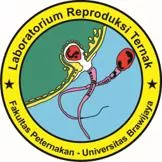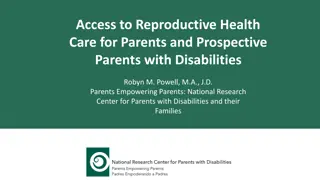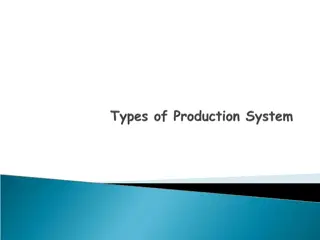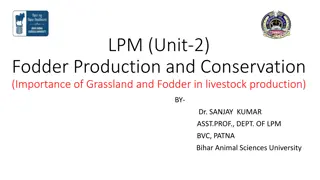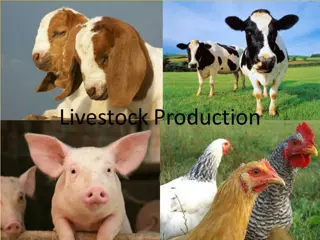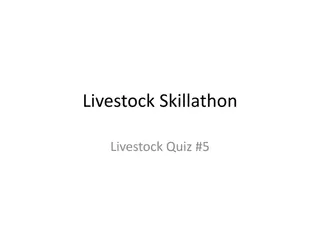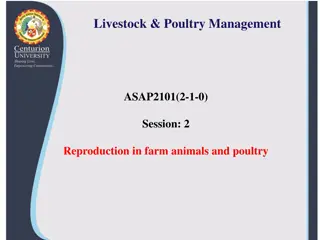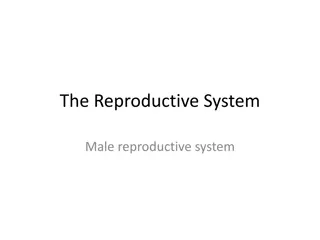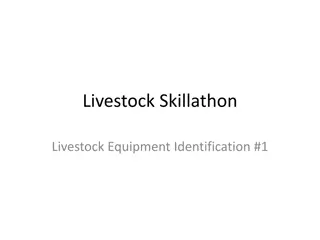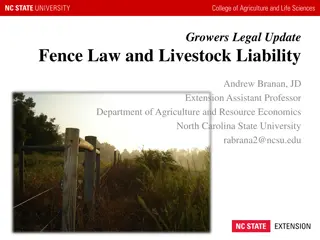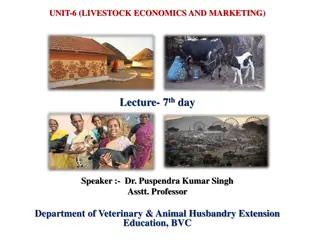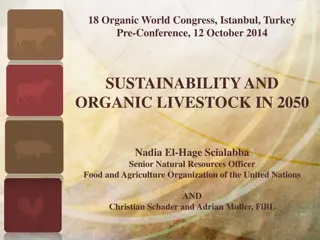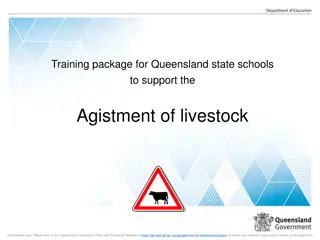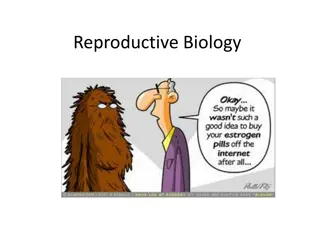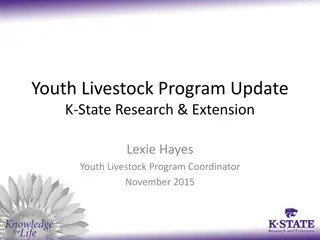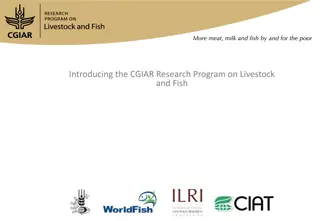Reproductive Efficiency in Livestock Production
Understanding the factors affecting reproductive efficiency in livestock, such as postpartum period, anestrus, and fertility indices in dairy cattle. Discover methods to enhance reproductive performance and the impact on successful farming practices. Explore the importance of timely calving intervals and the significance of heat detection in maximizing livestock productivity.
Uploaded on Oct 08, 2024 | 0 Views
Download Presentation

Please find below an Image/Link to download the presentation.
The content on the website is provided AS IS for your information and personal use only. It may not be sold, licensed, or shared on other websites without obtaining consent from the author.If you encounter any issues during the download, it is possible that the publisher has removed the file from their server.
You are allowed to download the files provided on this website for personal or commercial use, subject to the condition that they are used lawfully. All files are the property of their respective owners.
The content on the website is provided AS IS for your information and personal use only. It may not be sold, licensed, or shared on other websites without obtaining consent from the author.
E N D
Presentation Transcript
MATERI 13 EFISIENSI REPRODUKSI MK. ILMU REPRODUKSI LABORATORIUM REPRODUKSI TERNAK FAPET UB 1
SUB POKOK BAHASAN Makna dari Efisiensi Reproduksi Faktor-faktor yang mempengaruhi efisiensi reproduksi Cara-cara meningkatkan efisiensi reproduksi Pengaruh Efisiensi Reproduksi didalam keberhasilan usaha peternakan LABORATORIUM REPRODUKSI TERNAK FAPET UB 2
Efisiensi Reproduksi Jarak kelahiran pendek Jumlah/kelahiran tinggi Days open pendek Timbulnya berahi pascaberanak cepat LABORATORIUM REPRODUKSI TERNAK FAPET UB 3
Factors Affecting the Postpartum Period: Pre is most important Body condition at calving 1. Body condition pre- and postpartum Need to be concerned about plane of nutrition before and after calving based on BCS 2. Plane of Nutrition 3. Lactation stress Nutritional stress imposed by mammary gland Blocks release of GnRH which then reduces LH to stimulate ovary follicular development 4. Suckling stimulus 5. Photoperiod Seasonal breeders: Mare and ewe Short expression of estrus 6. Temperature Placement of male with females will decrease time to estrus. Especially important in the ewe (Ram Effect) 7. Presence of male
Reproductive inefficiency in dairy Anestrus Failure to observe heat & True anestrous Failure to breed Management decision Failure to conceive Fertilization failure (male size) Fertilization (female size) AI technique Early embryonic death Stillbirth / dystocia
Target of reproductive performance One calf one year Calves Young Stock 305 milking days Milk production
Fertility indices in dairy cattle Calving interval Calving to conceive Mean calving to 1stservice Cows showing heat at 60 days PP85 % Conception rate to 1stservice Conception rate all service Service per conception Average first calving 365 d 85 d 65 d 70 % 58 % < 1.5 24 m
Heat Watch 1. Transmitter with pressure sensitive button on top 3. The receiver accepts the mounting activity signal from the transmitter Receiver 2. Mounted onto cow s rump using a patch and adhesive 4. Information is transferred to computer for processing by HeatWatch software.
Reproductive efficiency in sow and gilt Farrowing rate Farrowing index Conception rate Non-productive or empty day Piglet born per sow per year Total number and number of born live
Reproductive cycle Gestation Lactation Interval from weaning to estrus Total days per cycle 115 days 21-28 days 5 days 141-148 days Farrowing index = 2.5 -2.6
Targets for reproductive efficiency Litters/sow/year Farrowing rate Non-repeat rate Liter size Born live Born dead Mummified >2.3 > 85 % >90 % >11.5 >11 <0.5 <0.5
STATUS REPRODUKSI TERNAK 1) Berada pada kondisi kesuburan yang normal 2) Kondisi kemajiran ringan atau infertile 3) Kondisi kemajiran yang tetap (steril)
GANGGUAN REPRODUKSI 1. Jarak antara beranak lebih dari 400 hari 2. Jarak antara melahirkan sampai bunting kembali melebihi 120 hari 3. Angka kebuntingan kurang dari 50 % 4. Rata rata jumlah perkawinan perkebuntingan lebih besar dari dua 5. Jumlah induk sapi yang membutuhkan lebih dari tiga kali IB untuk terjadinya kebuntingan melebihi 30 %.
PENGELOLAAN REPRODUKSI 1. Pemberian pakan yang berkualitas dan cukup 2. Lingkungan serasi yang mendukung perkembangan ternak 3. Tidak menderita penyakit khususnya penyakit menular kelamin 4. Tidak menderita kelainan anatomi kelamin yang bersifat menurun 5. Tidak menderita gangguan keseimbangan hormone khususnya hormone reproduksi 6. Sanitasi kandang yang baik.
PROGRAM KESEHATAN REPRODUKSI 1. Meningkatkan keterampilan dan kesadaran beternak bagi para peternak 2. Pemeriksaan secara tetap tiap bulan pada ternak betina oleh petugas kesehatan reproduksi 3. Penilaian terhadap prestasi reproduksi induk.
PROGRAM KESEHATAN REPRODUKSI 4. Pelaksanaan perubahan pengelolaan reproduksi menuju keuntungan yang lebih baik, yang meliputi : a. Penyediaan ransum pakan untuk induk yang sedang bunting dan laktasi b. Keserasian kondisi lingkungan untuk pertumbuhan ternak c. Deteksi Berahi yang tepat d. Waktu tepat kawin e. Pengelolaan yang tepat terhadap uterus pasca melahirkan.


